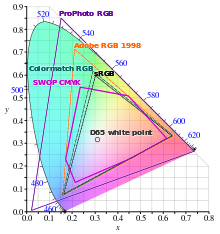- Joined
- Aug 20, 2006
- Messages
- 13,000
The lack of P3 color gamut support is probably a big reason why the current model is being phased out; the late 2015 Retina iMac already features a wide-gamut display. There is also that rumor of a GPU being integrated into the monitor.
While everyone is excited about a new monitor and a GPU, I think there’s a much more grounded reason Apple is refreshing its display hardware: P3. The P3 color gamut is one Apple is big on, and once you see it — you can’t un-see it. It goes well beyond the standard sRGB spectrum and specifically makes greens and blues pop. Apple says P3 brings about 25 percent more color to your display, which is especially handy when editing photos or doing other visual design work. Most good cameras can capture colors our monitors just can’t display, which is why Apple thinks P3 is a winner; it can show those colors.
While everyone is excited about a new monitor and a GPU, I think there’s a much more grounded reason Apple is refreshing its display hardware: P3. The P3 color gamut is one Apple is big on, and once you see it — you can’t un-see it. It goes well beyond the standard sRGB spectrum and specifically makes greens and blues pop. Apple says P3 brings about 25 percent more color to your display, which is especially handy when editing photos or doing other visual design work. Most good cameras can capture colors our monitors just can’t display, which is why Apple thinks P3 is a winner; it can show those colors.
![[H]ard|Forum](/styles/hardforum/xenforo/logo_dark.png)
